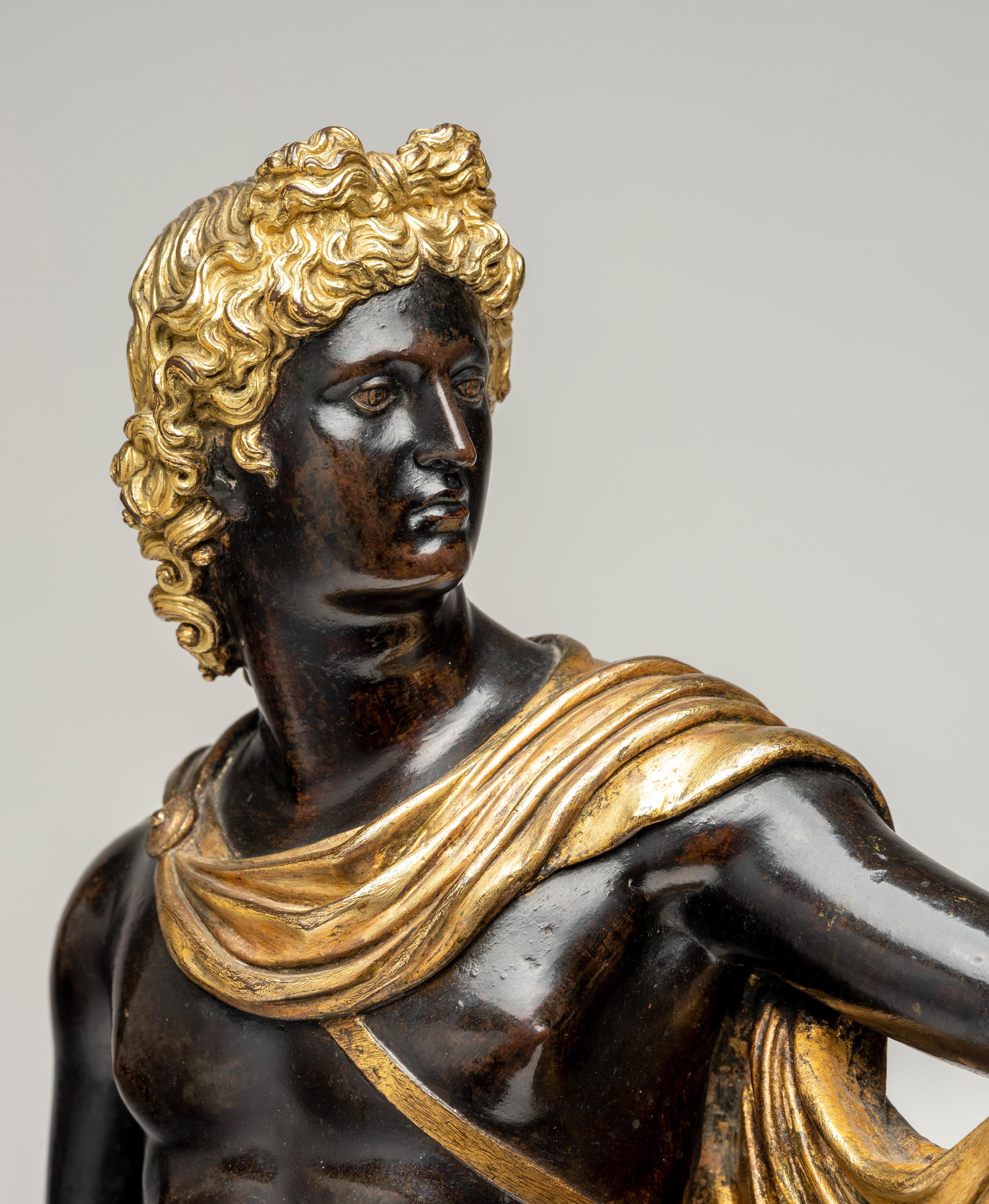
BULLETIN FOR PROFESSIONAL
2024
ADVISERS

CONTACT Amelia Walker awalker@christies.com +44 (0) 20 7389 2085 SELL WITH CHRISTIE’S PRIVATE AND ICONIC COLLECTIONS AUCTION PRIVATE SALES CHRISTIES.COM Sold prices include buyer’s premium; for full details see christies.com OMBERSLEY COURT: THE COLLECTION OF LORD AND LADY SANDYS London, November 2023 © RORYRAEPHOTOGRAPHY

Luisa Romanelli
Associate Director
Christie’s Heritage and Taxation Advisory Service
lromanelli@christies.com
+44 (0) 20 7389 2725
In the field of Heritage and Taxation there has been much speculation over the past year as to whether any fundamental changes to Inheritance Tax will be made by the current government. While these in particular have not yet materialised, the sweeping and unexpected changes to the taxation of Non UK-Domiciled individuals will have caught many practitioners and indeed their clients by surprise and the precise consequences that these will have on the UK economy and tax landscape remain to be seen.
Shedding further light on current Inheritance Tax matters, in this issue Matthew Woods of Withers LLP focuses on the issues that face rural Estates, in terms of both the reliefs available as well as the considerations that should be born in mind for future planning and maintaining the availability of these important reliefs for owners.
We also feature an overview from Aurea Wilson of Wrigleys Solicitors LLP on letters of wishes and their interactions with Wills, which is certainly useful reading and demonstrates an important distinction to bear in mind not only for those working specifically in this area of tax, but also in terms of one’s own Estate planning.
Elsewhere, John Bedford of Dechert LLP has provided a comprehensive overview of Financial Crime Compliance in the Art Market, and has highlighted some of the recent developments, with particular focus on those related to Russian clients, and the sanctions that remain in place.
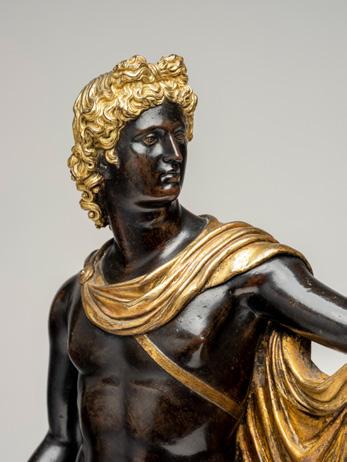
Cover
A PARCEL-GILT BRONZE FIGURE OF THE APOLLO BELVEDERE (detail)
by Pier Jacopo Alari Bonacolsi, called Antico (c.1460–1528), c.1520–22
© The Fitzwilliam Museum, University of Cambridge
Copyright © Christie, Manson and Woods Ltd., and contributors 2024. No part of this publication may be reproduced, stored in a retrieval system or transmitted by any form or by any means, electronic, mechanical, photo-copying, recording or otherwise without the prior written permission of Christie’s.
Comments and Suggestions If you would prefer to receive future Bulletins by email or in PDF format, or if you have any comments or suggestions regarding the publication, please email lromanelli@christies.com
Christie’s
8 King Street, London
SW1Y 6QT
Tel: +44 (0) 20 7839 9060
Note
All views expressed in this Bulletin are a matter of opinion only. Neither Christie’s nor contributors accept any liability whatsoever in relation to the accuracy of the opinions given.
In addition to these technical articles we also feature the ongoing festivities that are taking place at the National Gallery for their NG200 bicentenary celebrations, and Mary McMahon takes us through the history of the collection as well as highlighting events throughout the country. The National Gallery has recently acquired the exquisite portrait by Eva Gonzalès of her sister, Jeanne, entitled The Fulllength Mirror, which has come from a UK collection and was sold via private treaty sale with negotiations led by Christie’s.
A further highlight from the past year from Christie’s Heritage and Taxation Advisory Service is the work featured on our cover, the Apollo Belvedere, by Pier Jacopo Alari Bonacolsi (called Antico) which was acquired by the Fitzwilliam Museum via the Acceptance in Lieu scheme, and Ruth Cornett takes a closer look at the finely balanced figure, and how this form has endured from the antique and beyond, even influencing the Portrait of Mai as featured in last year’s issue.
Finally, it is always a pleasure to see works joining UK public collections, and to contribute to the enjoyment of art by all. In this spirit, we have highlighted a wonderful charitable organisation, Art History Link-Up, led by Rose Adin, which provides Art History courses for students at schools where it is not ordinarily taught. As an Art History graduate myself, I can testify to the importance of this subject, not only in terms of learning about wider historical and social issues through artwork, but how it also provides the transferable skills to pivot to other disciplines.
EDITORIAL AND INDEX 1
Index 3 Editorial Luisa Romanelli 5 The Constancy of Forms in Art Ruth Cornett 6 Letters of Wishes Aurea Wilson 9 Celebrating 200 Years of The National Gallery Mary McMahon 14 Financial Crime Compliance John Bedford 17 Art History Link-Up Rose Aidin 21 The Durability of the Rural Estate Matthew Woods Editorial
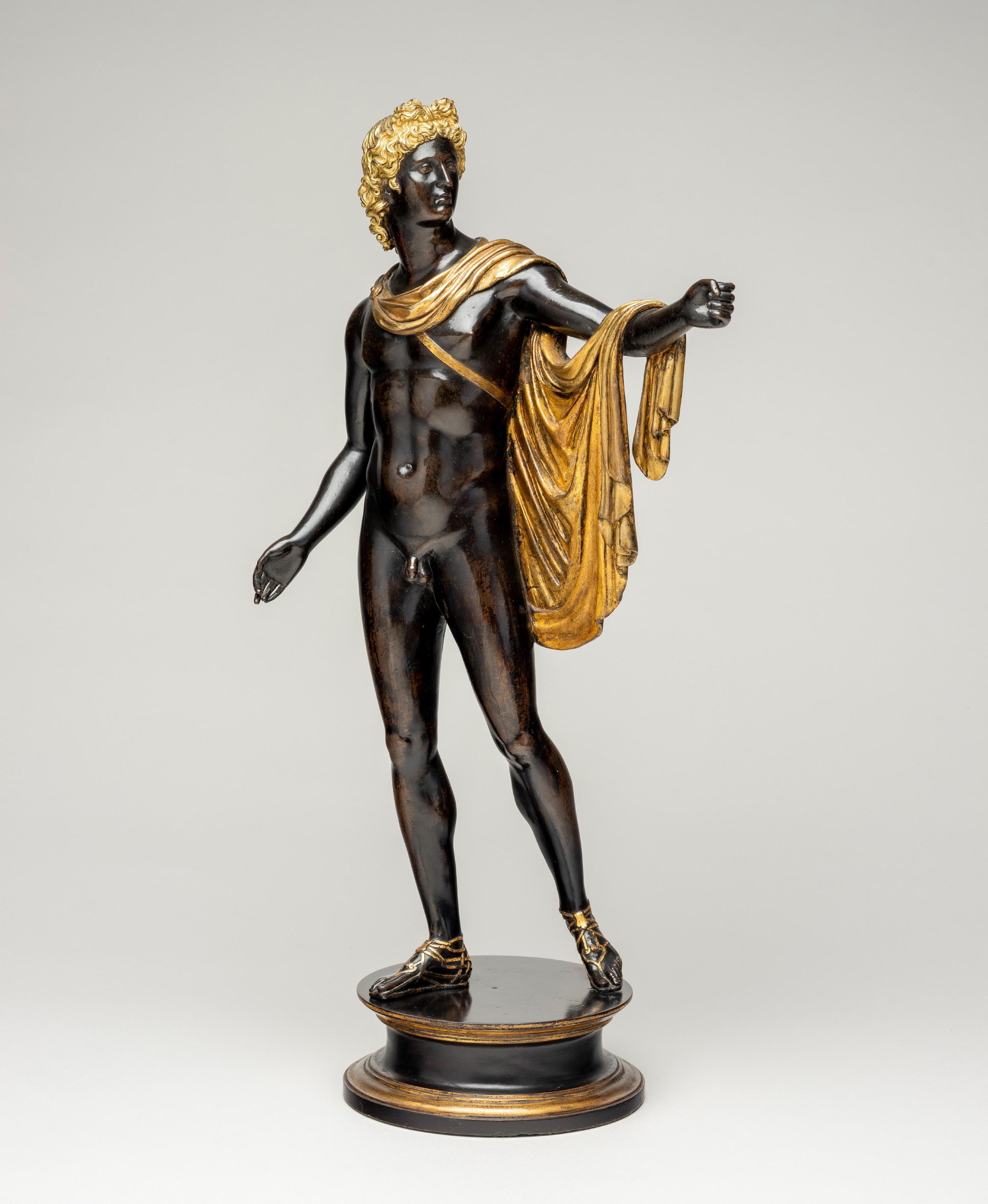
The constancy of form in works of art
– a closer look

Ruth Cornett
Senior Director
Christie’s Heritage and Taxation Advisory Service
rcornett@christies.com
+44 (0) 20 7389 2102
Prior to joining Christie’s, Ruth Cornett worked as a tax adviser in a number of professional firms in the City and the West End of London. After training as an art historian and working as a curator in the V&A, Ruth changed careers in 1992, studying law and qualifying as a Chartered Tax Adviser (CTA) in 1998. Ruth has advised a broad spectrum of clients on a range of tax matters with a particular emphasis on capital gains tax, inheritance tax and income tax. To consolidate her expertise in these areas, Ruth qualified as a Trust and Estate Practitioner (TEP) in 2008. Ruth lectures frequently for Christie’s Education and STEP on tax and heritage matters, has contributed to leading publications in this field and sits as an observer on the Tax and Political Committee of Historic Houses (HH).
In March 2023 Christie’s Heritage and Taxation Advisory Service completed the negotiation of an outstanding bronze statuette of the god Apollo as an offer in lieu of inheritance tax to the Fitzwilliam Museum in Cambridge. With the responsibility and trust from our clients to negotiate many such transactions, why does this one in particular make us pause and reflect?
The statuette was executed by Pier Jacopo Alari Bonacolsi (c.1455–1528), commonly called “Antico”, around 1498-99, who took as his inspiration the marble statue of Apollo, now known as the Apollo Belvedere. Unearthed in Rome in 1489, the Apollo Belvedere was immediately recognised as a masterpiece of antique sculpture and an outstanding survivor from ancient Rome. It was first owned, after the rediscovery, by Cardinal Giuliano della Rovere, later Pope Julius II, an avid collector of art, and was displayed in his sculpture garden before being moved to the Vatican in 1511, where it remains today. The fame of the Apollo Belvedere was immediate and cannot be overstated, it was to have lasting impact on artists from that date forward, across various media, including prints, painting and bronze. Antico was amongst the earliest to use the composition in another medium, but we see the composition reproduced, in painting particularly, throughout western European art thenceforward.
Opposite
A PARCEL-GILT BRONZE FIGURE OF THE APOLLO BELVEDERE
by Pier Jacopo Alari Bonacolsi, called Antico (c.1460–1528), c.1520–22
© The Fitzwilliam Museum, University of Cambridge
The allocation to the Fitzwilliam Museum was a condition of the offer and allowed the curators to reunite the Renaissance bronzes from the Boscawen collection, already a part of the museum’s outstanding holdings of decorative arts. There is perhaps, a deeper resonance to the allocation of the Apollo, and enduring myths detail his role as god of music and the arts, often depicted with the muses, from which the very word museum ultimately derives, a temple of learning and the arts. The classical origin is emphasised by the spectacular architecture of the Fitzwilliam Museum and its collection of Renaissance paintings in which gallery Antico’s Apollo now finds its natural home. As part of the National Gallery’s bicentenary celebrations, the Fitzwilliam will host the loan of Botticelli’s Mars and Venus and it will be displayed in the same gallery as Apollo – one might, fancifully, suggest a conversation between the gods of love, war and the arts in a temple to the muses, or the opportunity to compare the inspiration of classical themes by two outstanding Renaissance artists. I think, while these are interesting points, it is the resonance and line of continuity from antiquity in the pose, through the Renaissance to the 20th century that continues to fascinate us. At the same time as this offer in lieu was finishing, at Christie’s we were concluding negotiations for the acquisition of the Portrait of Mai by Sir Joshua Reynolds to the National Portrait Gallery. In that portrait Reynolds used the same pose derived from the Apollo Belvedere, thus allowing Mai to become a transcendent figure and connecting him to the inspiration of antiquity. Times change, challenges surround us, but the constancy of art, whether or not in the home of the muses, allows us to take a step away from the everyday and for a moment consider how much we connect with each other and our heritage.
THE CONSTANCY OF FORM IN WORKS OF ART – A CLOSER LOOK 3
The advantages of flexibility and privacy with non-legally binding Letters of Wishes in the context of Wills

Aurea is an associate in the Private Client team at Wrigleys Solicitors LLP. She deals with all aspects of Private Client work, including lifetime tax and succession planning, the formation and reorganisation of trusts and the preparation of Wills and Powers of Attorney. Aurea has a particular interest in work involving heritage property.
As most readers will know, a Will is initially a private document but on a client’s death, once probate is issued (if required), a Will becomes a public document, accessible to anyone (including a beneficiary) who applies for a copy. This is clearly something for testators to bear in mind when making a Will and as such, they often may like to consider putting in place a non-legally binding Letter of Wishes, either to explain decisions made in relation to their Will or to express how any discretionary powers under the Will should (in their view) be exercised. This is particularly important where a testator’s Will creates a trust of any kind but especially so when a discretionary trust is involved, which is often the case where a client either has young children or high value/complicated assets and affairs.
The advantage of a Letter of Wishes is that it will remain a private document, unless the trustees decide to share it with the beneficiaries. A huge benefit of this is that if the testator would like to leave specific assets (for example a valuable painting or parcel of land) to a specific beneficiary, they could keep this information private if they do not leave a specific legacy of this asset in their Will and instead only refer to it in the non-binding private Letter of Wishes.
Further, it is not uncommon for a testator to change his or her wishes over time. Where the structure of the Will remains sound and appropriate for achieving the testator’s wishes, it may be that the only changes needed are to the accompanying Letter of Wishes, not the Will. An example might be expressing a wish for a cash legacy to be paid to an individ-
CHRISTIE’S BULLETIN FOR PROFESSIONAL ADVISERS 4
Aurea Wilson Associate Wrigleys Solicitors LLP
ual, and wanting to change the amount. If this legacy were included in the Will, that would necessitate a codicil or a new Will (the latter most likely if the legacy were decreasing). Overall, updating a Letter of Wishes is a much simpler and more cost efficient undertaking which in itself can encourage clients to keep their Wills and Letters of Wishes up to date.
As is widely known, and as should be stressed to clients who are making Wills and Letters of Wishes, a Letter of Wishes is not legally binding, but you can explain to clients that in normal circumstances, it would be hoped (and perhaps expected) that well thought out wishes expressed in a Letter of Wishes would be followed; indeed such guidance is hugely helpful for executors and trustees, and should be encouraged. It should also be explained to clients that there is perhaps a huge advantage in the Letter of Wishes being non-binding as it allows executors to adapt to changing circumstances and situations. For example, if a client left a large cash sum outright to a minor child under their Will, if that child was not stable enough to receive this cash at the time of the testator’s death, or perhaps they were having marital or financial difficulties, there would be no possibility of the executors departing from the gift made under the Will. In contrast, if the testator leaves assets on discretionary trust and in their Letter of Wishes explains that it is their hope that the executors/trustees make a large financial distribution from the trust to their child as soon as possible on their death, then the executors/trustees could decide not to make an outright payment and perhaps retain the funds in trust for that child for asset protection reasons.
There are also often circumstances where a recipient under a Will would prefer assets to pass to their own children instead, for their own estate planning or asset protection reasons; something the testator may not have appreciated at the time of making the Will. As a result, in this circumstance I would often advise to include a sentence in a Letter of Wishes to explain that the recipients of the discretionary trust funds should be consulted first to see if they would prefer to divert assets to the next generation. In this sense, Letters of Wishes offer great flexibility for the executors and trustees, allowing them to either follow the testator’s wishes when it is the best course of action, or to depart from them when circumstances so dictate.
It is hoped, and I would go as far as to say expected, that executors and trustees will follow Letters of Wishes, or at least the general sentiment expressed in them, wherever possible. There is a recent case of Folds Farm Trustees Ltd v Cutts [2024] EWHC 12 (Ch) (15 January 2024), where trustees of two Will trusts applied to court to obtain the Court’s blessing as to a decision to distribute assets in a certain way that was a) well within their powers, b) a monumental decision in terms of the impact on the beneficiaries and c) would not be totally in line with the wishes expressed in the testator’s Letter of Wishes, even if they were trying to follow the general sentiment expressed by the testator (i.e. to keep the
family farm in the family). In this case, Master Clark approved (pursuant to the Public Trustee v Cooper jurisdiction) the decision by trustees to appoint a farm to one of the beneficiaries subject to that beneficiary being bound by certain conditions. One of these conditions was that the recipient beneficiary had to make a capital payment to the trustees which enabled the trustees to make capital payments to the other beneficiaries. The other beneficiaries opposed the application to court and the trustees’ decision on the grounds that it would not result in fairness as between all of the discretionary beneficiaries and on the grounds that they alleged that the trustees were failing to give effect to the provisions of the testator’s Letter of Wishes.
In this case, Master Clark approved (gave a “blessing” for) the trustees’ decision citing various reasons, including:
• The Will trust was a discretionary trust and as a result none of the beneficiaries have entitlement to income or capital and there is no obligation on the trustees to treat the beneficiaries equally.
• Even if the Letter of Wishes had requested that the beneficiaries should be treated equally (which it did not), as long as when exercising their discretion, the trustees take into account relevant matters and come to a rational decision (and are not conflicted), then the existence of a Letter of Wishes does not affect the inherent position that some beneficiaries of a discretionary trust may be treated more favourably.
In this case, the trustees wanted to make the decision they made in order to a) keep the farm in the family, b) to deal with crippling debts that were making running the trust inefficient and carrying out the testator’s wishes impossible and c) to provide some meaningful provision for all beneficiaries (even if that was not equal provision). This case shows that it is perfectly reasonable for trustees of a discretionary Will trust to depart from strict instructions left in a Letter of Wishes if the circumstances dictate that it is the best course of action and it also shows that trustees will, where possible, try to follow the sentiment expressed in a Letter of Wishes (in this case, the wish to keep the farm in the family and provide for all children), even if they do not follow it to the letter. This is something that clients should be reminded of when putting in place a non-binding Letter of Wishes alongside their Will.
Clearly both privacy and flexibility are huge advantages of non-legally binding Letters of Wishes and clients should always be encouraged to put these in place where their Wills create trusts and where their assets and affairs are complicated and/or particularly valuable. We do, however, need to be mindful to remind clients that trustees may depart from the wishes expressed in them, especially if the circumstances dictate the need to.
THE ADVANTAGES OF FLEXIBILITY AND PRIVACY WITH NON-LEGALLY BINDING LETTERS OF WISHES IN THE CONTEXT OF WILLS 5
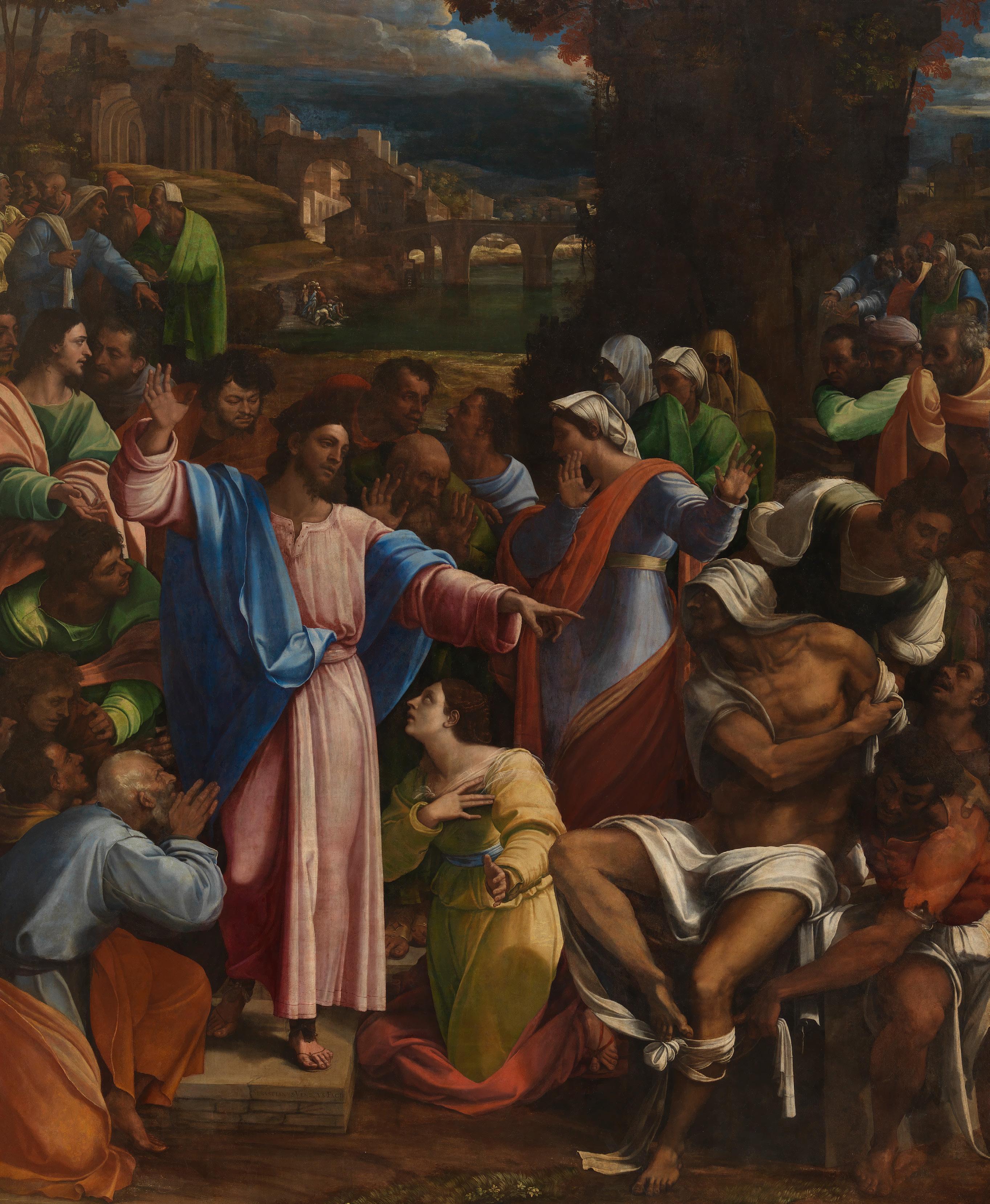
Celebrating 200 years of the National Gallery
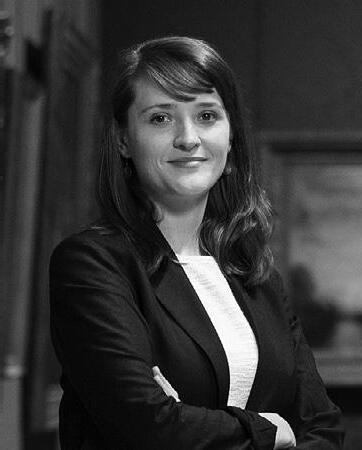
Mary McMahon Associate Curator The National Gallery (NG200 Collections)
Mary is Associate Curator at the National Gallery for the rehang of the collections for NG200. She was formerly Acting Associate Curator of 1600-1800 Paintings, and prior to that Bernays Curatorial Fellow of British Paintings. She has held exhibition, research and curatorial positions at the British Museum, Victoria and Albert Museum and Watts Gallery.
On 10th May 2024 the National Gallery celebrated 200 years since the foundation of this extraordinary institution. This date also marked the start of a series of celebrations that will take place on site in Trafalgar Square and throughout the country in the coming year. Through these we will look back at the Gallery’s history and development of its collection, which today holds over 2,300 works spanning the major traditions of Western European painting.
The foundation of a national gallery in Britain had been proposed from at least the mid-eighteenth century. Earlier collections that spurred these discussions included Sir Robert Walpole’s Houghton Collection when sold in 1777. By the early 1800s growing international collections, notably that held in the Louvre which had been greatly expanded by Napoleon, made the construction of such a collection seem for some in Britain, a national necessity.
The National Gallery Collection was founded in 1824, with the first 38 works purchased from the collection of the financier and collector John Julius Angerstein (1735-1823) by the British government. Many of these paintings remain key to contemporary displays, such as Sebastiano del Piombo’s Raising of Lazarus, Hogarth’s celebrated series Marriage A-la-Mode, and several works by French, Dutch and Flemish artists. The Gallery first opened in Angerstein’s townhouse at 100 Pall Mall in London. The art collector and painter Sir George Beaumont (1753-1827) had promised his collection to the nation on the condition that Angerstein’s collection be purchased, and suitable accommodation provided. In 1826 he made this significant gift of 16 paintings, including Claude’s Hagar and the Angel, Rubens’s A View of Het Steen in the Early Morning, and Canaletto’s early work The Stonemason’s Yard, an unusual example to find in a British collection. By 1828 the Trustees were already asking for additional gallery space, and three years later they approved a plan to replace the King’s Mews with a new building designed by William Wilkins. In the meantime, structural problems caused by construction work on the Carlton Club next door led to the collection being moved to 105 Pall Mall in 1834.
Opposite SEBASTIANO DEL PIOMBO, INCORPORATING DESIGNS BY MICHELANGELO
The Raising of Lazarus, 1517-19, oil on synthetic panel, transferred from wood. The National Gallery, London. Bought 1824 © The National Gallery
The Wilkins building at Trafalgar Square opened on 9 April 1838 as the home of the National Gallery. Until 1869 this building was shared with the Royal Academy, which filled the rooms to the right of the portico entrance, while the Gallery could be found to the left. Since these early years the building has been much altered and expanded in response to the growing and evolving collection. A suite of eight rooms, the Barry Rooms, were created between 1872 and 1876. Five new galleries in the west wing were created by 1911, the Mond Room was added in 1928, and the Duveen Room in 1929. These were connected by new rooms in 1937 and 1961. A Northern Extension was opened in 1975, providing thirteen new galleries specifically intended for northern European paintings. In 1991 the Sainsbury Wing opened, designed to contain the earliest part of the collection, and became the new entrance to the gallery.
CELEBRATING 200 YEARS OF THE NATIONAL GALLERY 7
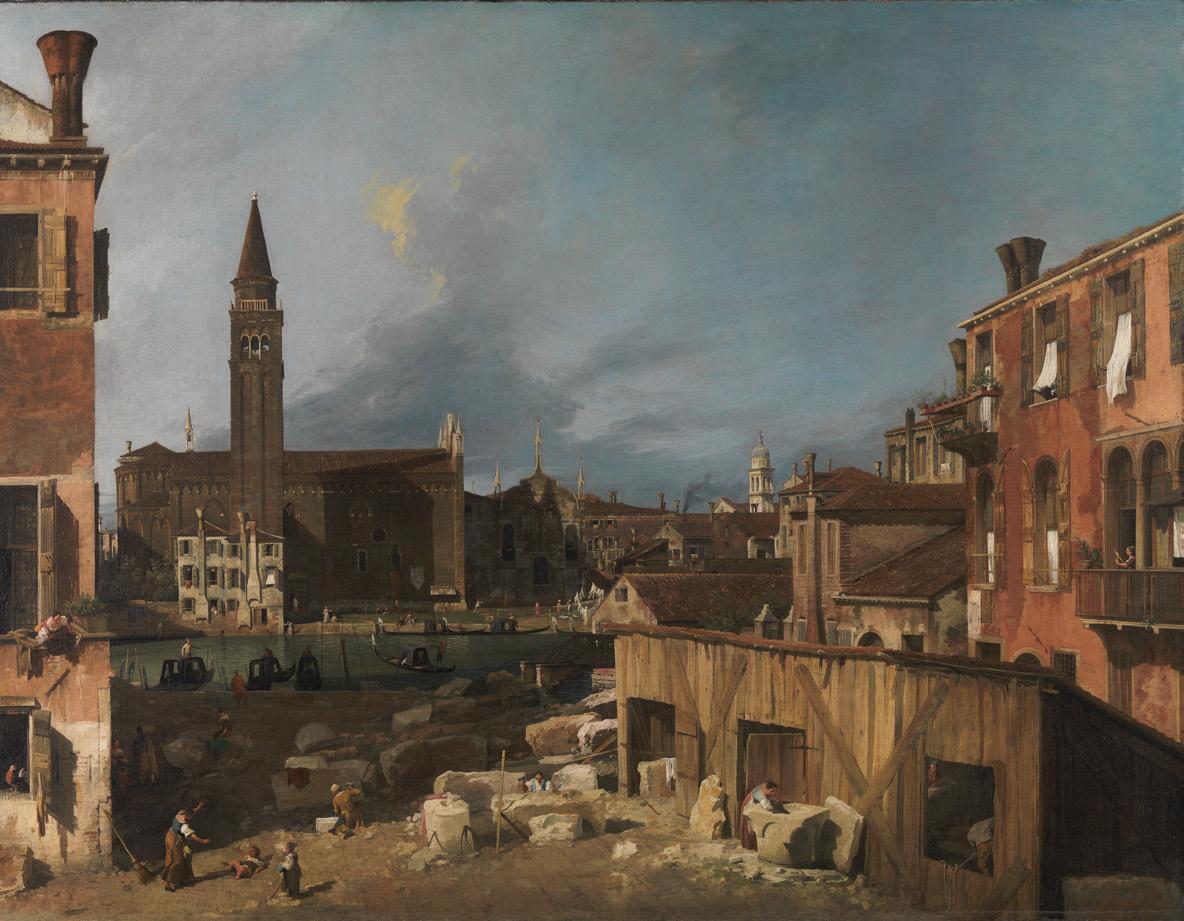
The Gallery had no formalised annual purchase grant at its formation and the tastes of the Trustees and other figures came to influence the acquisition of new pictures. As early as the 1840s they were criticised for failing to collect works by the earlier Italian Schools. In 1855, when the Gallery’s management was formally reconstituted, a new position of Director was created with Sir Charles Eastlake appointed as the first postholder. The Directors would prove influential on the collection strategy from the beginning. Eastlake travelled through Europe to purchase paintings for the gallery and ensured the expansion principally of the collection of Italian painting.
Sharing its site with living artists, the British art within the National Gallery’s collection grew at a fast rate due to the gifts and bequests of generous compatriots who collected British art, and purchases which came through the Chantry Bequest Fund. In the mid-nineteenth century, this included works by then contemporary artists. Indeed, Sir David Wilkie’s The Village Holiday had already entered the collection in 1824 when the artist was still alive (this is now in Tate Britain). Robert Vernon presented a large group of British works in 1847. With the limitations of space on site in Trafalgar Square, this expansion led to that part of the collection being displayed first at Vernon’s private house, and then later at Marlborough House. When the House was needed by the Prince of Wales, many of these paintings would be displayed at the South Kensington Museum (now the Victoria & Albert Museum). The artist J.M.W. Turner had died in 1851, but his contested Will was only settled in 1856, when the National Gallery was allocated the contents of his studio: 100 finished pictures, 182 unfinished, and 19,049 drawings to be added to the collection. These works came to the gallery and were displayed at South Kensington, with other British works. When the building of the National Gallery was enlarged in 1876, the paintings returned to Trafalgar Square.
The industrialist Henry Tate offered his collection of 65 paintings from the modern British schools in 1889, but due to the limitations of space the Trustees had to turn this down. Tate then offered to create a separate building for the display of British works, which opened in 1897 as the National Gallery of British Art. In 1917 it became known as the National Gallery, Millbank, and its remit expanded to include some historic British and modern foreign art. From 1932 it was named the Tate Gallery and in 1955 this institution became independent from the National Gallery. However, works deemed ‘masterpieces’ of British art have been retained at the Gallery where they are celebrated and framed with the wider development of Western European painting. Their numbers have grown in recent years.
Collectors and benefactors have always played a key role in the development of the National Gallery Collection, and their significant contributions have continued to the present day. In 1924 Samuel Courtauld (1876-1947) established a trust fund of £50,000 to acquire examples of
CHRISTIE’S BULLETIN FOR PROFESSIONAL ADVISERS 8
Above
CANALETTO
Venice: Campo S. Vidal and Santa Maria della Carità (‘The Stonemason’s Yard’), about 1725, oil on canvas. The National Gallery, London. Sir George Beaumont Gift, 1823; passed to the National Gallery, 1828 © The National Gallery
Below
BERNARDO BELLOTTO
The Fortress of Königstein from the North, 1756-8, oil on canvas. The National Gallery, London. Bought with the support of the American Friends of the National Gallery, The National Gallery Trust, the Estate of Mrs Madeline Swallow, Art Fund (with a contribution from The Wolfson Foundation), Howard and Roberta Ahmanson, The Deborah Loeb Brice Foundation, Mrs Mollie W. Vickers, The Manny and Brigitta Davidson Charitable Foundation, The Sackler Trust and through private appeal, 2017 © The National Gallery
Impressionist and Post-Impressionist art (the Courtauld Fund). The Honourable Simon Sainsbury bequeathed five masterpieces as recently as 2006. The Art Fund also has a long history of supporting acquisitions at the National Gallery, from Velázquez’s Rokeby Venus in 1906, and The Burlington Cartoon by Leonardo Da Vinci in 1962, to more recent acquisitions such as The Fortress of Königstein from the North by Bernardo Bellotto in 2017, and the Self Portrait as Saint Catherine by Artemisia Gentileschi in 2018.
With two centuries of expanding the collection and inspiring artists and visitors, this auspicious year provides an opportunity to give unprecedented access to the collection and the research around it to people across the city, country and the world as part of the NG200 programme. On 10th May, 12 exhibitions and displays opened across the UK at museums and galleries in the four nations of the UK as part of NG200: National Treasures. Each is centred around a masterpiece from the collection, including Constable’s The Hay Wain, Renoir’s Umbrellas, Botticelli’s Venus and Mars and Rembrandt’s Self Portrait at the Age of 34. At the same time a touring art studio started to travel through the UK as NG200: Art Road Trip, bringing 200 workshops and learning opportunities to communities who otherwise would not have ready access to the Gallery’s paintings. A national public art commission, NG200: Jeremy Deller’s ‘The Triumph of Art’ will celebrate the 200 years by demonstrating how festivals form part of art, culture and civic life.
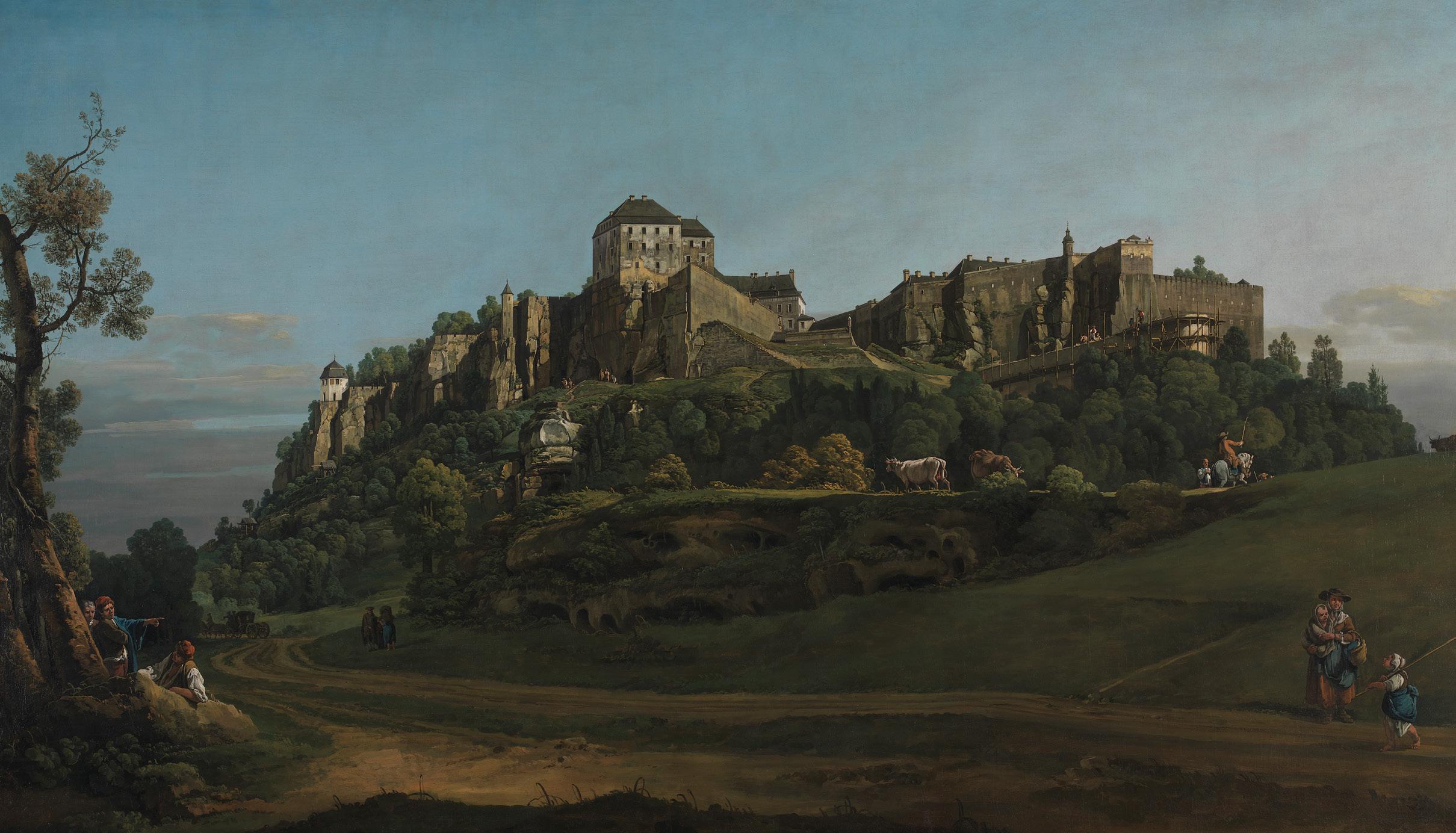
CELEBRATING 200 YEARS OF THE NATIONAL GALLERY 9

Self Portrait as Saint Catherine
1615-17, oil
The National Gallery, London. Bought with the support of the American Friends of the National Gallery, the National Gallery Trust, Art Fund (through the legacy of Sir Denis Mahon), Lord and Lady Sassoon, Lady Getty, Hannah Rothschild CBE and other donors including those who wish to remain anonymous, 2018 © The National Gallery
To increase the opportunities for knowledge and study of the collections, NG200: 200 Paintings for 200 Years makes digitally accessible a vast array of information of all kinds about 200 key paintings in the collection, sharing the wealth of the National Gallery’s research for all. Simultaneously a digital Gallery experience has been created for the Bicentenary with NG200: The Virtual Gallery. The experiences of people who have played a part in the National Gallery’s 200-year history, will be uncovered digitally in the gallery as NG200: National Gallery Stories. For NG200: 200 Creators, 200 social media creators from across the UK celebrate the Gallery as a source of inspiration for creativity. An online film series NG200: Behind the Scenes will act as a micro documentary engaging the public with key parts of the NG200 programme.
At the Gallery, the annual summer festival will open in Trafalgar Square as NG200: Summer on the Square. The autumn 2024 exhibition NG200: Van Gogh marks 100 years after the Gallery acquired Van Gogh’s Chair and Sunflowers, and in spring 2025 NG200: 14th century Siena will present a full-scale exhibition of early Sienese art. These two exhibitions celebrate the breadth of the collection from its earliest works to some of its most recent.
The anniversary year will close with NG200: Welcome, marking the opening of the transformed Sainsbury Wing entrance, a new Supporters’ House, and a Research Centre. This coincides with NG200: The Main Event which will reveal a rehang of the permanent collection in the main galleries of the building in Trafalgar Square. Together these events will allow us to celebrate the strengths of the nation’s collection, welcoming more people to view it in person, while extending our reach and expanding the opportunities for all going forward as the National Gallery enters its third century.
CHRISTIE’S BULLETIN FOR PROFESSIONAL ADVISERS 10
Above
The National Gallery today © The National Gallery
Opposite
ARTEMISIA GENTILESCHI
of Alexandria, about
on canvas.

The increasing importance of financial crime compliance in the art market
In the last decade, there has been an increasing focus on the potential for the art market to be used by nefarious actors for financial crime and other illicit purposes. Recent developments in law, regulation and the geopolitical climate –particularly connected to the waves of sanctions imposed primarily by western governments on Russia – have moved financial crime issues even further up the agenda for art market participants and professional advisers to the art market. The need for those involved in the art market to be aware of, and to take proactive preventative measures in connection with, financial crime matters is also emphasised by guidance and statements issued by the relevant enforcement and supervisory agencies.
This article highlights some of the key UK legal and regulatory developments in relation to sanctions that have impacted the art market.

John Bedford is a partner at Dechert LLP who advises on financial crime compliance, commercial litigation, white collar investigations and international arbitration.
Mr. Bedford has nearly two decades of experience representing clients in domestic and international disputes and investigations covering a wide range of industries, including art, financial services, e-commerce, payment services, manufacturing and life sciences.
SANCTIONS AND THE ART MARKET
Asset freezes
Sanctions can take a variety of forms to achieve their desired objective. The most common and well-known form of sanctions is the designation of individuals and entities as being subject to an asset freeze. This generally prevents those within the jurisdictional scope of UK sanctions (that is any conduct occurring in the UK or conduct by a UK national or UK company occurring anywhere in the world) from: ( 1 ) dealing with any funds or economic resources that are owned, held or controlled by the designated person; or ( 2 ) making funds or economic resources available (directly or indirectly) to the designated person. The definition of “economic resources” in the Sanctions and Anti-Money Laundering Act 2018 is broad and covers “assets of every kind, whether tangible or intangible, movable or immovable, which are not funds but can be used to obtain funds, goods or services”. Accordingly, works of art are “economic resources” and, as such, any person within the jurisdictional scope of UK sanctions is prohibited from: ( 1 ) dealing with art belonging to or held by those individuals or entities that have been designated as subject to an asset freeze; and ( 2 ) selling art and providing related services to designated persons.
The recent waves of sanctions related to Russia, some of which have heavily focused on Russian oligarchs, have led to a significant increase in the overlap between designated persons and those with extensive art collections/dealings in the art market. In these circumstances, it is important that art market professionals and advisers conduct screening of customers and counterparties against applicable sanctions lists (preferably using appropriately calibrated screening software, but manual checks of individual sanctions lists can suffice depending on the risk profile) and that staff are made
CHRISTIE’S BULLETIN FOR PROFESSIONAL ADVISERS 12
John Bedford Partner Dechert LLP
aware of and trained on the sanctions risks facing the business (ideally based on a specific sanctions risk assessment conducted and refreshed regularly by the business).
There are a couple of additional points to note regarding asset freezes that are of relevance to art market professionals and advisers:
1 If any entity is owned or controlled by a designated person then, from a UK sanctions perspective, the entity will also be considered to be sanctioned (the position is similar under EU sanctions, whereas US sanctions focus solely on ownership rather than control) and, as such, it is prohibited to deal with the entity’s assets or to make funds or economic resources available to the entity. UK sanctions (the test under EU sanctions is similar) define ownership and control for these purposes as:
A holding directly or indirectly more than 50% of the shares or voting rights in the entity;
B holding the right directly or indirectly to appoint or remove a majority of the board of directors of the entity; or
C it is reasonable, having regard to all the circumstances, to expect that the person would (if they chose to) be able, in most cases or in significant respects, by whatever means and whether directly or indirectly, to achieve the result that the affairs of the entity are conducted in accordance with the person’s wishes.
The ownership/control issue highlights that art market professionals and advisers should understand the ownership and corporate structures of their customers and counterparties. This is particularly the case in circumstances where the high value art collections of sanctioned individuals may be held by offshore trusts or corporate vehicles with complex ownership structures rather than in the sanctioned individual’s own name.
2 Art market professionals and advisers dealing with clients/customers and counterparties based in Russia (and whose conduct is not captured by the trade sanctions described below) should also be aware that a number of Russian banks have been designated which can cause practical difficulties in making or receiving payments to/from/via Russia. This is because the designation of a bank prevents any dealing with funds and economic resources owned, held or controlled by the bank, which includes funds held in customer accounts at the bank (even if the customers or counterparties in question are not themselves sanctioned).
Restrictions on luxury goods, gold and diamonds
In addition to financial sanctions, the UK has also implemented a number of trade sanctions aimed at hindering the Russian “war machine”. The trade sanctions which are set out in the Russia (Sanctions) (EU Exit) Regulations 2019 (the “UK Russia Regulations”) include prohibitions on: ( 1 ) exporting “luxury goods” to or for use in Russia; ( 2 ) supplying or delivering luxury goods from a third country to Russia; ( 3 ) making luxury goods available to a person “connected with Russia”; and (4) making luxury goods available for use in Russia. There are similar restrictions on the export or supply of luxury goods to Belarus pursuant to the Republic of Belarus (Sanctions) (EU Exit) Regulations 2019 (the “UK Belarus Regulations”).
For the purposes of these restrictions on “luxury goods” in both the UK Russia Regulations and the UK Belarus Regulations, the definition of “luxury goods” includes works of art and a person is “connected with Russia/Belarus” if they are an individual ordinarily resident or located in Russia/Belarus or a legal entity constituted under Russian/Belarusian law or domiciled in Russia/Belarus. The UK Russia Regulations also contain restrictions on the provision of certain ancillary services (technical assistance, financial services and funds and brokering services) connected to the export/supply of luxury goods to Russia or to persons connected with Russia.
The UK Russia Regulations and the UK Belarus Regulations both also contain prohibitions on the import and acquisition of (with the intention of importing into the UK) gold and gold jewellery that originates in Russia/Belarus. The prohibitions also extend to the import of “relevant processed gold” which is gold that has been processed in a third country and incorporates gold that, on or after a certain date originated in Russia/Belarus and has been exported from Russia/ Belarus. There are also similar restrictions on ancillary services (technical assistance, financial services and funds and brokering services) in connection with the import/acquisition of gold and gold jewellery.
The UK Russia Regulations also contain prohibitions on the import and acquisition of diamonds and diamond jewellery that originates in Russia. There is also a prohibition on the import of “relevant processed diamonds” which are diamonds processed in a third country and which originate in Russia. The restrictions on diamonds also extend to ancillary services connected to the import/acquisition of diamonds and diamond jewellery.
The key point for art market professionals and advisers and those dealing with jewellery is that there is limited scope for doing business with individuals and entities based in Russia. Accordingly, it is important for art market professionals and advisers to understand: ( 1 ) the location and nationality of their customers/counterparties; ( 2 ) the destination of artworks they are shipping/selling abroad; and ( 3 ) the provenance of any gold/diamonds they may be selling or transporting.
THE INCREASING IMPORTANCE OF FINANCIAL CRIME COMPLIANCE IN THE ART MARKET 13
Regulation 54C of the UK Russia Regulations prohibits the direct or indirect provision of various professional and business services (i.e. accounting, advertising, architectural, auditing, business and management consulting, engineering, IT consultancy and design and public relations) to persons “connected with Russia”. It should be noted that the definitions of the various restricted services are quite broad. In the circumstances, art market professionals and advisers should be mindful of exactly what services they are providing (if any) when they are engaging with persons “connected with Russia”.
As a general point, it should be noted that there are limited exceptions and grounds on which it may be possible to obtain a licence in connection with the prohibitions described in the paragraphs above. These tend to be fact specific and so each situation would need to be analysed closely to determine whether any exceptions or licences might be available.
Commentary from supervisory/enforcement authorities
The UK Office of Financial Sanctions Implementation (“OFSI”), a part of HM Treasury and the UK authority for the implementation of financial sanctions, has issued guidance for “high value dealers” which covers art market participants. The guidance highlights the importance of due diligence:
“Individuals or businesses conducting activity in, or around high-risk jurisdictions should seek to have a robust understanding of the sanctions regulations in place, including the relevant obligations. Independent legal advice should always be sought where necessary and a risk-based approach should be taken, conducting enhanced due diligence to understand the full range of activity and the persons involved in any supply chains, etc.”
The guidance also sets out examples of typologies connected to circumvention of sanctions. One example given is:
“The movement of assets, including the sale of high value assets which were previously associated with a designated person, by family members or otherwise on their behalf, where funds are then disbursed offshore through secrecy jurisdictions, is an indicator suspected of being used to evade sanctions.”
In January 2024, various UK enforcement authorities (including OFSI and the National Crime Agency) issued an amber alert for financial sanctions evasion, money laundering and cultural property trafficking through the art storage sec-
tor. The alert explains the concerns of the enforcement authorities as follows:
“This Alert highlights that criminals are finding ways to utilise the art market to conduct illicit activity. Art market participants (AMPs) – including those working in the art storage sector or in a linked specialist service provider capacity – should have the ability to identify within their business any change in client status and suspicious activity relating to financial sanctions evasion, money laundering, cultural property trafficking, or other criminality. Thorough due diligence checks conducted at regular intervals will assist in ascertaining any change to a client’s circumstances that may affect their risk rating…”
Conclusion
The recent sanctions on Russia and Belarus have increased the sanctions risk for art market professionals and advisers and are a reminder that those operating in the art market should ensure they have a robust sanctions compliance framework in place (obviously tailored to their individual needs so that any framework is reasonable and proportionate to the relative sanctions risk they face). This is against a backdrop of continued focus on financial crime risk more generally with anti-money laundering issues still high on the agenda (the Know Your Customer requirements also play an important role in mitigating sanctions risk) and the UK Government recently introducing a failure to prevent fraud offence as part of the Economic Crime and Corporate Transparency Act 2023.
CHRISTIE’S BULLETIN FOR PROFESSIONAL ADVISERS 14 Restrictions on certain services
Art History Link-Up

Chief Executive, Art History
Link-Up
Rose is the founder and Chief Executive of Art History Link-Up. She has a PGCE with QTS Teaching Qualification in Art and Art History, undergraduate and post-graduate degrees in History of Art, and extensive experience of teaching in the state and independent sectors. Prior to becoming a teacher, she worked as a journalist, writing for national newspapers and specialist publications about contemporary art, the art world, and the art market.
The Creative Industries generate only slightly less income for the UK than banking, employing over 2.4 million people, and in 2022, they contributed £126 billion to the economy. Yet despite these encouraging statistics, there has been a drastic decline in the take up of arts subjects at school. In the last decade, there has been a fall of 47% in arts GCSE entries and a reduction of 23% in arts teachers in state schools. Currently, fewer than one per cent of state schools offer Art History qualifications. This is having a knock-on effect for universities too, with arts and humanities degrees being dropped and departments closing. Applications to study Art History at university have decreased by over 25% in this period.
Against this challenging backdrop Art History LinkUp (AHLU) has been working hard to provide opportunities for those in state schools to study Art History free of charge. Since 2016 more than 500 students from over 300 state schools have completed courses with us, with many of our alumni currently studying Art History at universities across the UK. Seven of our alumni are currently studying Art History at the University of Cambridge – and make up 13% of the first year alone - while others are entering careers in the sector. AHLU alumni are employed at the National Portrait Gallery, the Royal Collection and Christie’s, to name a few. When I founded Art History Link-Up in 2016, I was an Art History teacher who knew how life-changing a subject Art History can be for all students. I still believe passionately that everyone who wants to study Art History should have the opportunity, not just those who can afford to pay for their education.
At a time when there is much attention on how we increase diversity in the arts, I’m particularly proud of the work we do to widen participation. Currently, only 2.7% of workers in UK museums, galleries and libraries are from minority-ethnic backgrounds. Yet in the academic year 202223, 48% of AHLU’s students were from ethnic minority backgrounds, 32% from under-represented backgrounds, and over 10% had additional learning challenges. As Hannah Rothschild CBE, Chair of the Rothschild Foundation, has remarked, “The next generation of academics, curators, thinkers and practitioners will include many of Art History Link-Up’s alumni.”
I also felt strongly, when I set up Art History Link-Up, that teaching should be provided by experienced and subject-expert teachers and, as much as feasible, in the presence of great art. This wouldn’t have been possible without the many extraordinary partners that Art History Link-Up has worked with since 2016 including the Courtauld Institute of Art, Dulwich Picture Gallery, the National Gallery, the Wallace Collection and Waddesdon Manor.
We currently deliver Art History A Level and Extended Project Qualification (EPQ) courses on Saturday mornings during term time at the Courtauld Institute of Art (as well as online for those who cannot make it into central London).
ART HISTORY LINK-UP 15
Rose Aidin
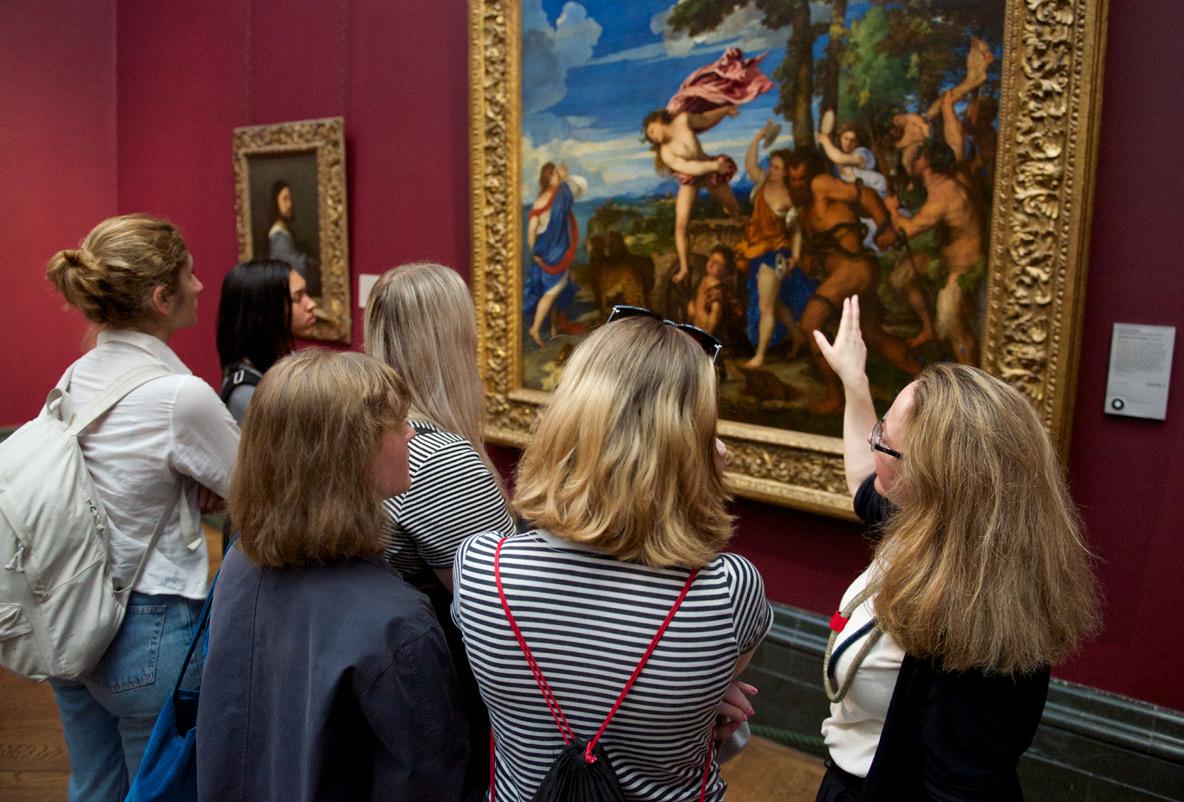

Over 80 students from across the UK enroll on our courses each year, and give up their Saturdays with smiles on their faces and a hunger for learning that is heart-warming to see.
Christie’s has been a significant and very important supporter and partner of AHLU since 2021. Orlando Rock, Christie’s Chairman, has written, “Christie’s is enormously proud of our close association with Art History Link-Up: a fundamental bridge in enabling talented individuals from diverse backgrounds to step into the art world”. Three AHLU alumni have recently been awarded places on Christie’s apprenticeship programme, many more have undertaken work experience placements with the company, while several have been appointed to permanent positions.
Of course, this has been a journey! Our first classes started in 2016 at the Wallace Collection, with only twenty state school students. In 2017 we doubled our student numbers and based a second class at the National Gallery. In 2022, we moved to Somerset House to be at the Courtauld Institute of Art. We also trailed introductory summer courses for younger students at the Dulwich Picture Gallery, the Courtauld and National Gallery in 2022, as part of our return to in-person teaching following the pandemic.
In 2020, when public spaces closed, AHLU pivoted to online delivery, and we were able to double both our student numbers and our potential reach to students outside London. Now over half of our students are based across the UK. Our Art History A Level and EPQ courses returned to in-gallery teaching in March 2022, and are at present delivered simultaneously online and in-person in an effective hybrid teaching format.
The galleries have given us dedicated teaching space and associated support free-of-charge. By teaching with first-hand access to the UK’s most significant art collections, AHLU is helping to ensure that these nationally-owned holdings are a resource for everyone. Dr Gabriele Finaldi, Director, The National Gallery, has said, “We are proud to support the great work that Art History Link-Up does in making art accessible to young people from a broad range of social backgrounds. A targeted education programme like this enables youngsters to see just how relevant art history is in contemporary society.”
Students receive outstanding levels of tuition and support from our teaching team of dedicated subject specialists, expert educators, and teaching assistants, many of them have been with AHLU for at least five years and more. Volunteer class lecturers include Dr Caroline Campbell, Director, National Gallery of Ireland; Professor Alex Marr, Head of the History of Art Department (designate), University of Cambridge; and Dr John Taylor, an architect of and Chief Examiner of the EPQ.
Alongside great teaching and direct observation from art, is a belief in nurturing and encouraging each individual. We hope that we can help every one of our students in different ways. AHLU students are offered study support, weekly homework clubs with a dedicated Student Officer and Lead
CHRISTIE’S BULLETIN FOR PROFESSIONAL ADVISERS 16
Top Rose Aidin, AHLU Founder and Chief Executive, teaching the Renaissance at the National Gallery in 2016 (Quentin Newark)
Above
Helen Hillyard, Assistant Curator, Dulwich Picture Gallery, teaching on an AHLU pilot Introduction to Art History course for 13-to-15 year old state school students, funded by the Band Trust, in 2022. (Ed Hands)
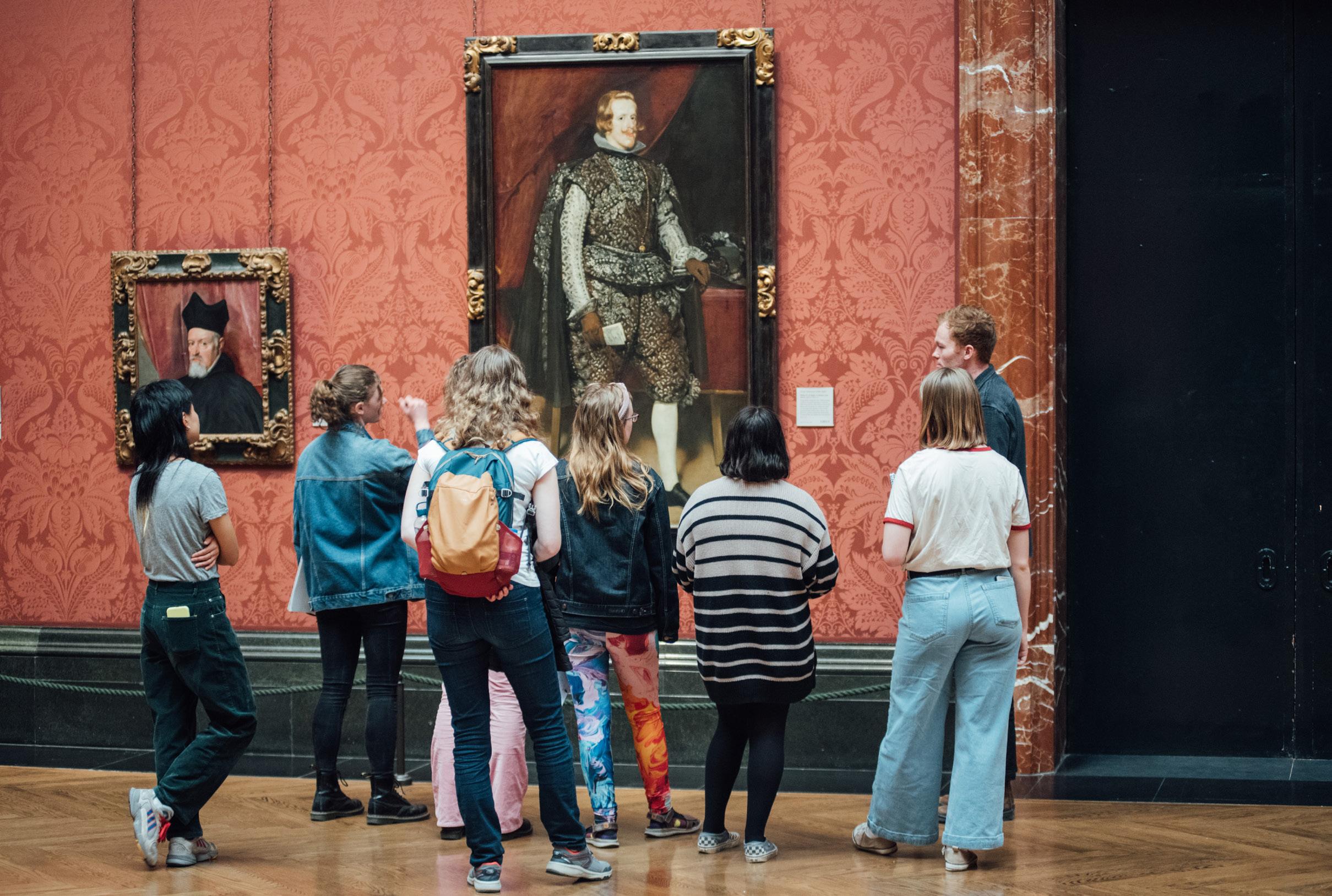
Teaching Assistant, and expert A Level preparation nurture groups. In addition, there is individual EPQ mentoring from volunteer experts. A current student told me recently, “For the first time, I have found a place where I feel completely at ease. Having the confidence to talk openly in front of a group of people is something I had never done before. I really look forward to attending every week and to talking to the lovely tutors and attendees of the course.”
Another of our current students observed, “History of Art is not an A Level available at my college and so studying with AHLU is the only access I have to the subject that I would like to study at university. AHLU offers amazing opportunities, and I knew the course would give me great exposure to and knowledge about the art world that I would not be able to find anywhere else.”
We also support our students holistically with extracurricular activities, and support with university applications, as well as opportunities via our alumni organisation which might be the envy of any young person. The recent AHLU x Christie’s Education Scholarship Award, for example, challenged students to make a film or write an essay about a work of art or architecture that could be sold at Christie’s.
ART HISTORY LINK-UP 17
Above
AHLU Teacher Isaac Nugent teaching the Baroque to AHLU Art History A Level students at the National Gallery in 2022. (Ed Hands)
Below
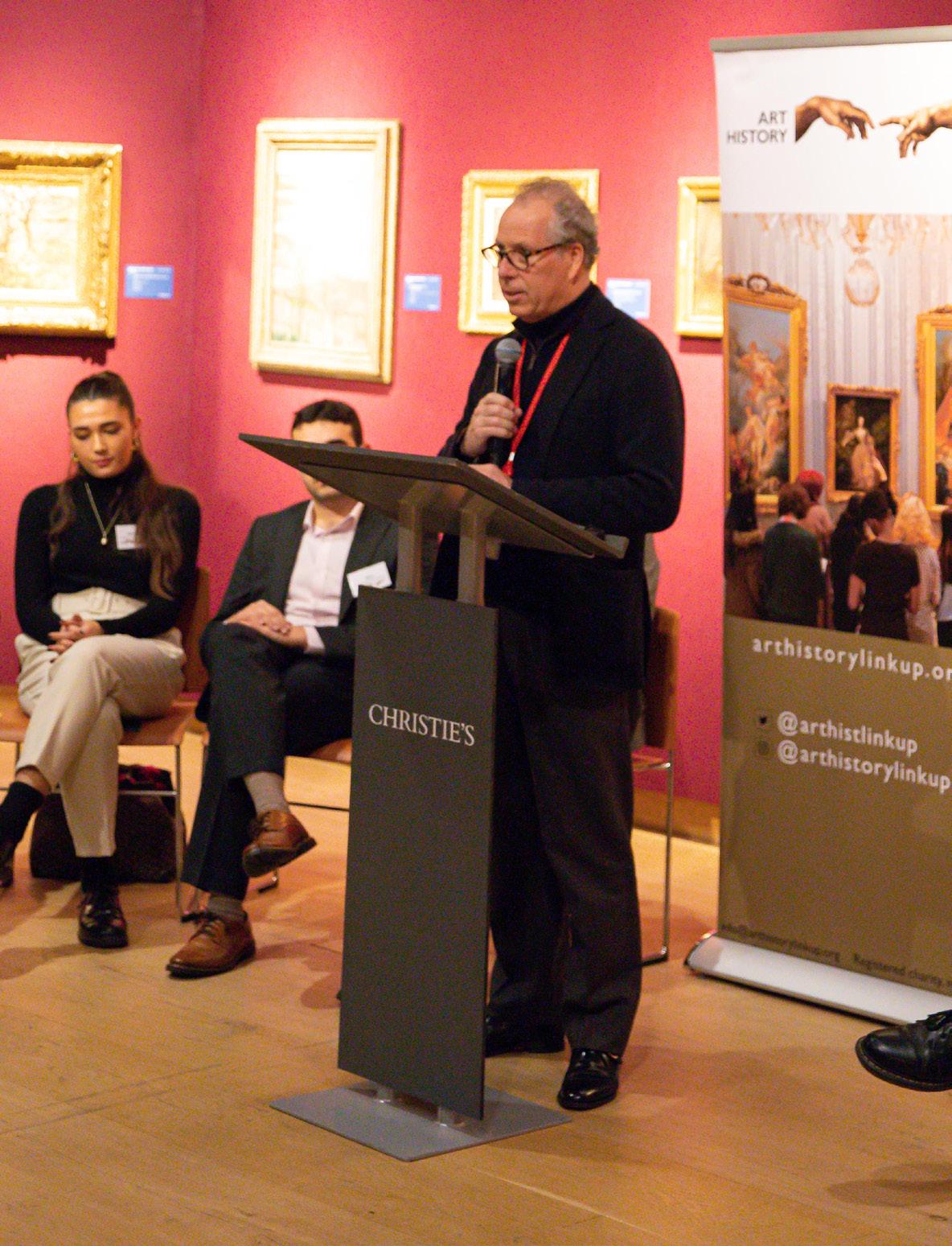
There were five prizes of a laptop and access to Christie’s Education’s online courses.
The high quality of the entries proved a challenge for our eminent panel of judges, which included Craig Clunas, Professor Emeritus and former Chair of Art History, the University of Oxford; Ted Sandling, Head of Christie’s Education, and Deborah Swallow, Professor Emerita and former Director, the Courtauld Institute of Art. The students’ entries and achievements were marked with a hybrid prize-giving ceremony, with Professor Swallow even joining remotely from the Getty, Los Angeles. As Craig Clunas has said of our students, “We need that fearlessness, and that intellectual curiosity. The field of art history needs it, if the pool of talent from which art historians are drawn becomes too shallow or too narrow, then what we will end up will inevitably be a shallow and narrow art history.”
As we look to the future, Art History Link-Up’s aim is to expand our reach, impact and legacy still further. Our longterm ambition is to build a network of organisations across the UK, such as schools and historic house collections, that can provide introductory Art History courses directly to secondary pupils pre-GCSE (KS3/4) and for these courses to be accredited, in due course. We believe this would lead to increased interest and take-up of A Level, EPQ and degrees in Art History as well as careers in the arts.
AHLU has been working on Introduction to Art History pilots for younger and new audiences since 2022. We are currently working with the Rothschild Foundation at Waddesdon Manor and with several schools in the area, and other centres, to build a programme with a legacy that is based around their historic collection. This will enable us to understand how best to shape this work with other partners in the coming years.
We continue to offer our free Art History A Level and EPQ courses, and to seek support from individuals, trusts and foundations, and corporate sponsors for our work. Our aim is to involve as many people as possible in our journey, in supporting the success of our students, and with the expansion of our operations to meet the opportunities presenting themselves to us, and for the transformational potential of Art History to reach as many young people as possible.
As the Earl of Snowdon, Christie’s Honorary Chairman, highlighted at a recent AHLU event, “It’s vital to give all young people of all different backgrounds, abilities and learning styles, the space to encounter art and craft, and the opportunity to study art history. That is why I am proud to support the work of this small, but mighty charity, and why initiatives such as Art History Link-Up are so important for all our futures”.
We know we are making a difference and that we are the only charity doing this work: please join us in ensuring a diverse and vibrant future for young people, for art history, and for the creative sector.
Art History Link-Up is a registered charity no. 1172792. Find out more at www.arthistorylinkup.org or email supporters@arthistorylinkup.org.
CHRISTIE’S BULLETIN FOR PROFESSIONAL ADVISERS 18
The Earl of Snowdon, Christie’s Honorary Chairman, discussing the importance of access to Art History for all with AHLU students at an AHLU supporters’ event, hosted by Christie’s, December 2022 (Hikaru Funnell)
The durability of the Rural Estate

The rural estate and the country house often spring to mind when one speaks of the British countryside. It is a special type of business that is a home to a family (often multi-generational), which usually plays an important part in the community and local economy and is part of the Nation’s heritage. The countryside is a significant contributor to British tourism and leisure and the rural estate often takes centre stage. Stewardship and succession to the next generation is in the DNA of owners as each generation looks to pass it on in a better state. In doing so, owners have innovated and, in many cases, diversified from more traditional land uses to remain profitable and relevant. Land uses, including leisure, hospitality, filming, renewables and environmental schemes have become significant contributors. What does that mean for the inheritance tax reliefs that are so important in being able to pass a viable business to the next custodian?
Agricultural relief
Relief is available for agricultural land given its importance in food security and is recognised as delivering environmental and health benefits for all. However, relief is restricted to the agricultural value and so there are traps for the unwary. If a tenant farmer is allowed to diversify from agricultural activities or there is amenity or development value there could still be an exposure to inheritance tax.
Support for farmers through the basic payment is gradually being withdrawn following Brexit and farmers are looking for other support payments to fill the gap, many of which are based on providing environmental benefits. There have been concerns that if environmental schemes are entered into, inheritance tax relief would be restricted but there was welcome news in the Spring 2024 Budget. It was announced that the scope of agricultural property relief would be extended to include land managed under environmental land management schemes. This is a welcome (if long awaited) confirmation for rural estates, which ensures that there is no inheritance tax disincentive to enter into one of these schemes.
Business relief
What about those parts of the rural estate that are no longer or never were agricultural? Most rural estates will have cottages that used to be occupied by farm workers and which are now let to third parties. Many will have diversified into holiday lets, B&B properties, a farm or tea shop, a garden opening business, a wedding or other events business, or converted redundant buildings into commercial or office space to name some common examples. If those activities are trading then business property relief will be available on the whole value and so many hospitality and leisure businesses will benefit from relief where the business is carried on ‘in hand’ by the owner or through a suitable joint venture with others.
THE DURABILITY OF THE RURAL ESTATE 19
Matthew Woods Partner Withers LLP
Matthew is a partner and co-head of the Landed Estates team at Withers LLP.
He has 25 years’ experience of advising owners of family businesses, including rural estates, of effective succession to the next generation.
Many owners will want to run the businesses that operate from their rural estate as part of the diversification of their farming business. However, even in these cases the position is not straightforward. The current attitude of HMRC is that where a ‘rent’ is received this is not a trading activity even if a great number of additional services are carried out. It is sometimes difficult to see or to comprehend the distinction between a business where relief is available – such as a B&B – and one where it is not – such as a furnished holiday let with extensive services. Case law may be out of step with the modern world but all is not lost. So long as the main part of the business is trading then business property relief should be available on the whole value. For owners who do not have the expertise or risk appetite and would prefer to receive a rent than operate a new business as long as this is not the main part of their business, relief should be available.
In these cases, care is needed to ensure that the balance does not tip the wrong way and prejudice relief elsewhere. Usually a partnership or company will help identify the extent of a business and should also make the claim for relief and succession more straightforward at the relevant time.
Funding the tax
For some, the level of non-trading activity will mean that other options will need to be considered as there will be too much non-trading activity for business property relief to be available for everything. Life insurance may be an option for a period of time but that comes at a cost that will increase (unless the premiums are guaranteed) to a point where it may become unaffordable or even unavailable. Insurance can be taken out in parallel with a strategy to build a fund for the next generation to enable them to pay inheritance tax on those assets where inheritance tax reliefs are not available but that is reliant on cashflow being available, which is not always the case.
Main house
The main house is often an area of most difficulty, perhaps due to size, family use or value. Reliefs that used to be available on a mansion house have long ceased to exist. For many rural estates, the house is the farmhouse, i.e. it is lived in by the owners who makes the day to decisions and it is of a size proportionate to the land being farmed. In these cases, agricultural relief should be available. However, even when that hurdle has been overcome, relief will only apply to the agricultural value but better than no relief. The starting point of the District Valuer is often a 30% reduction in the value but that should be challenged as in many cases that may not be the case and is not a figure enshrined in legislation even if examples can be pointed at in decided cases.
If the main house is not the farmhouse but it is part of a business then business property relief may be available in-
stead. The tension between some commercial use to help defray running and maintenance costs and family use may make it difficult to argue that the house is mainly being used in the business and this is where specialist advice is required. There may be a more obvious case where there is a house opening business but that does not apply in many cases.
If the main house is neither the farmhouse nor used in a business there may be other options, such as a transfer to charity. This may be regarded as a last resort as unless it is possible for the family to retain rooms or the occupation of the property is necessary for the furtherance of a house opening business. This is a one-way street as ownership of the property can never return to the family unless it is bought back from the charity. Inheritance tax may have been avoided at the cost of the property no longer belonging to the family.
An application for conditional exemption from inheritance tax is also a possibility if the property is of outstanding historical or architectural interest, which can include land which is essential for protecting the character of the building. Equally, it may be possible to claim conditional exemption for other parts of the estate perhaps as areas of outstanding scenic, historic or scientific interest. In all cases, this would require the owner to sign undertakings and enter into a Heritage Maintenance Plan setting out how the property or land would be maintained and preserved and detailing the costs associated with that. More fundamentally, there would be a requirement for 28 days public access which in many cases may not be consistent with the use of the property by the family. Where there may already be an element of public use and commercial exploitation, further use to satisfy this requirement might be worth the compromise as the relief is valuable. This has become an area of more interest for owners of historic and heritage properties who have already accepted an element of public access as the business of owning a rural estate has evolved.
If the main house is designated as conditionally exempt, this opens up the possibility of other assets being transferred into a heritage maintenance fund to support the house. The income must be spent on preserving or maintaining the heritage asset (or maintaining public access to it) and capital could be used at the discretion of the maintenance fund trustees. If this is what would have happened anyway, there is little downside and a valuable relief. Unlike a charity, if the family circumstances were to change, e.g. there was a windfall, it would be possible to bring the arrangements to an end. Inheritance tax would be due on the then value of the house and on winding up the maintenance fund (after 6 years) and so could be viewed as a useful deferral.
What is clear is that the rural estate continues to remain an important part of the social, historic and economic fabric of our countryside and as inter-generational family businesses have evolved and adapted to survive it remains as important as ever that the inheritance tax position is considered carefully.
CHRISTIE’S BULLETIN FOR PROFESSIONAL ADVISERS 20
CHRISTIE’S HERITAGE AND TAXATION ADVISORY SERVICE
Christie’s Heritage and Taxation Advisory Service has over 50 years of experience in undertaking offers in lieu of inheritance tax and is extremely experienced in this highly specialised field.






RUTH CORNETT, CTA TEP
Senior Director, Heritage & Taxation Advisory Service
rcornett@christies.com
+44 (0) 20 7389 2102
LUISA ROMANELLI, CTA
Associate Director, Heritage & Taxation Advisory Service
lromanelli@christies.com
+44 (0) 20 7389 2725
ZITA GIBSON
Senior Director, Head of Business Development, EMEA zgibson@christies.com
+44 (0) 20 7389 2488
TOM LEGH, TEP
Senior Director, Head of Estates, Appraisals and Valuations London tlegh@christies.com
+44 (0) 20 7389 2164
GEORGIE MAWBY, TEP Director, Estates, Appraisals & Valuations gmawby@christies.com
+44 (0) 20 7389 2804
CLAUDE MONET (1840-1926)
L’EPTE À GIVERNY
signed and dated ‘Claude Monet 84’ (lower left) oil on canvas
23.3/4 x 29 in. (60.5 x 73.5 cm.)
Painted in 1884
Accepted by HM Government in lieu of Inheritance Tax and allocated to the Walker Art Gallery, Liverpool.
Negotiated sales • Heritage exemptions • Cultural gifts scheme Pre- and post-sale tax advice • Other tax valuations
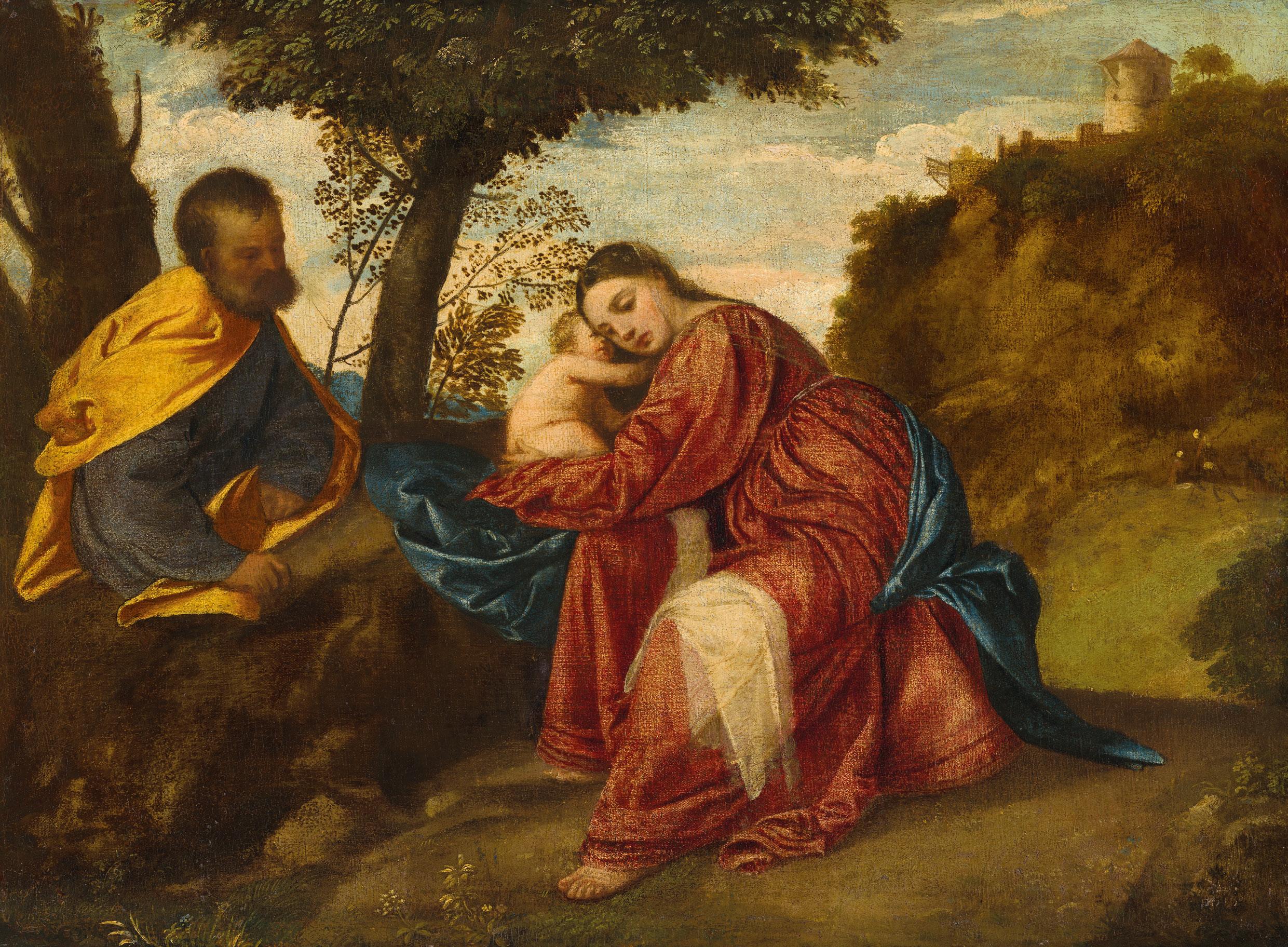
OLD MASTERS
London | 2 July 2024
The Rest on the Flight into Egypt oil on canvas, laid on panel 18.1/4 x 24.3/4 in. (46.2 x 62.9 cm.)
Est. £15,000,000 – 25,000,000
Part I
VIEWING 28 June – 2 July 2024 8 King Street London SW1Y 6QT Maja Markovic mmarkovic@christies.com +44 (0) 20 7389 2090 PROPERTY OF THE TRUSTEES OF THE LONGLEAT HOUSE & CHATTELS SETTLEMENT
CALLED
DI CADORE
1485/90-1576
TIZIANO VECELLIO,
TITIAN (PIEVE
C.
VENICE)
christies.com Other fees apply in addition to the hammer price. See Section D of our Conditions of Sale at the back of the Auction Catalogue



























